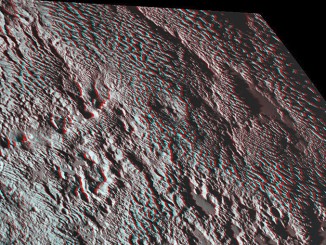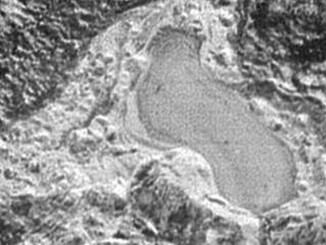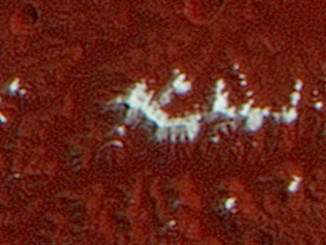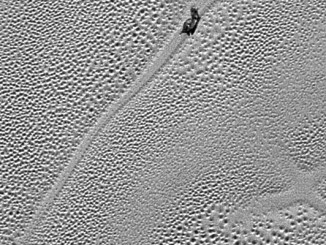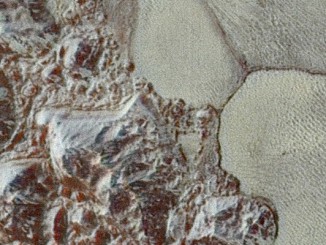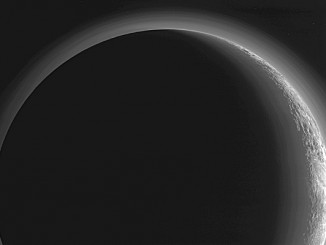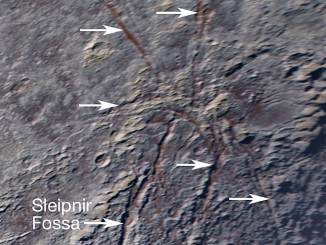
Pluto’s icy ‘spider’
Sprawling across Pluto’s icy landscape is an unusual geological feature that resembles a giant spider. This enhanced colour image, obtained by NASA’s New Horizons spacecraft on 14 July 2015, consists of at least six extensional fractures (arrowed) converging to a point near the centre. Curiously, the spider’s “legs” expose red deposits below Pluto’s surface.

